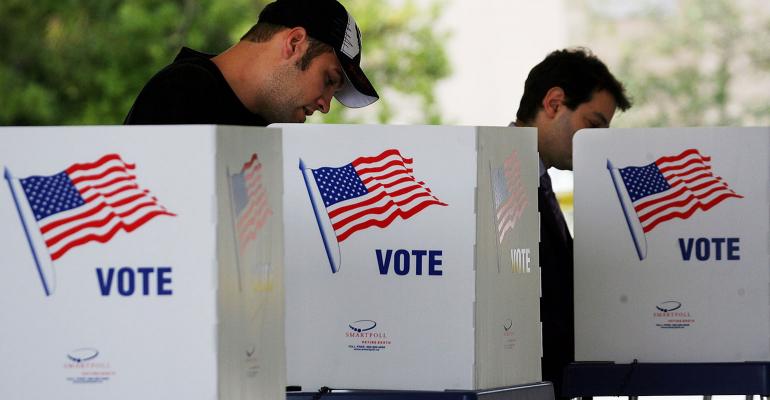By Michelle Kaske
(Bloomberg) --With Democrats hoping for a wave election next month that would roll back Republicans’ power in Congress, analysts are gauging how the return of a divided government -- or a narrower Republican margin -- could ripple through various corners of Wall Street. Among them is the $3.9 trillion state and local government bond market, a crucial niche of American finance that could be affected by tax legislation, a big infrastructure buildup or the collateral damage a surging federal budget deficit may have on the billions of dollars of aid that states receive each year.
Below are the things to watch:
Infrastructure
President Donald Trump campaigned on a pledge to pump more federal money into infrastructure like roads, bridges and airports. Yet his plan -- which proposed about $200 billion over a decade to kick-start private and local-government investments -- went nowhere, even with his fellow Republicans in charge of the House and Senate.
But infrastructure is one area where the partisan divide may be bridgeable. Former White House economic adviser Gary Cohn last month predicted that Trump would likely sign a Democrat-backed plan, even if it was costlier than the one he proposed. The Democrats earlier this year unveiled a $1 trillion infrastructure program, paid for in part by higher taxes on the top earners, that would provide big grants to state and local governments, as well as create new subsidized securities similar to the Build America Bonds that were issued after the recession. Whether Republicans would get on board is uncertain.
Matt Fabian, partner at Municipal Market Analytics, wagers there’s a more than 50 percent chance of an infrastructure bill passing the House if Democrats take control. Even so, it could easily die in a Republican Senate, given that a politically divided Congress is historically prone to gridlock.
“If you couldn’t get something done with control of both houses of Congress and the executive, it’s going to be difficult to get it done with a divided Congress,” said Ian Rogow, a municipal strategist at Bank of America Merrill Lynch.
Return of Refinancing
A major surprise of last year’s tax-cut law was that it did away with subsidies for municipal debt issued in so-called advance refundings, a tactic used by state and local governments to refinance bonds before they can be called back from investors. That did little to cover the cost -- saving the government only about $17 billion over a decade -- but it’s had a big impact on the muni-bond market, where new sales slipped this year. While that’s arguably been good for bondholders, with the drop off helping the market outperform during this year’s downturn, it means states and cities won’t be able to profit much the next time interest rates fall.
Emily Swenson Brock, director of the Federal Liaison Center at the Government Finance Officers Association, and Beth Pearce, the Vermont treasurer and president of the National Association of State Treasurers, said restoring the subsidies is something their groups will lobby for in the next Congress. A bill introduced in February to do that has made little headway, though it has support from both Democrats and Republicans.
Tax-Exemption
The tax exemption that investors receive from payments on state and local bonds has long been seen as a potential target for a budget-cutting Congress. Some Republicans have proposed doing away with it outright, while former President Barack Obama wanted to roll it back for the highest earners. The exemption, however, evaded the chopping block during last year’s big tax cut.
Citigroup Inc. analysts say that even if Congress musters the bipartisan support to enact a follow up to last year’s cut, the tax-exemption is unlikely to be at risk. However, the bank said lawmakers could roll back the subsidies for new private activity bonds -- or those sold on behalf of qualifying projects for businesses. That would sharply reduce the supply of new tax-exempt debt, potentially making it more valuable, since the securities account for about 25 percent of the market, by Citigroup’s estimate.
Federal Deficit
A potential squeeze at the federal level could affect states if it results in a pressure to cut funding for education, health-care and other programs. The federal deficit swelled by $116 billion to $782 billion in the 2018 fiscal year, according to the Congressional Budget Office, a non-partisan congressional research body. The CBO has estimated the shortfall will top $1 trillion in 2020. That will likely embolden Republicans to push for deeper cutbacks that could roll downhill, or undermine a push for new spending on infrastructure.
“Federal spending has to come down or taxes have to come up and either way it’s a threat to state and local economics,” Fabian said.
--With assistance from Danielle Moran and Amanda Albright.To contact the reporter on this story: Michelle Kaske in New York at [email protected] To contact the editors responsible for this story: James Crombie at [email protected] William Selway, Michael B. Marois





